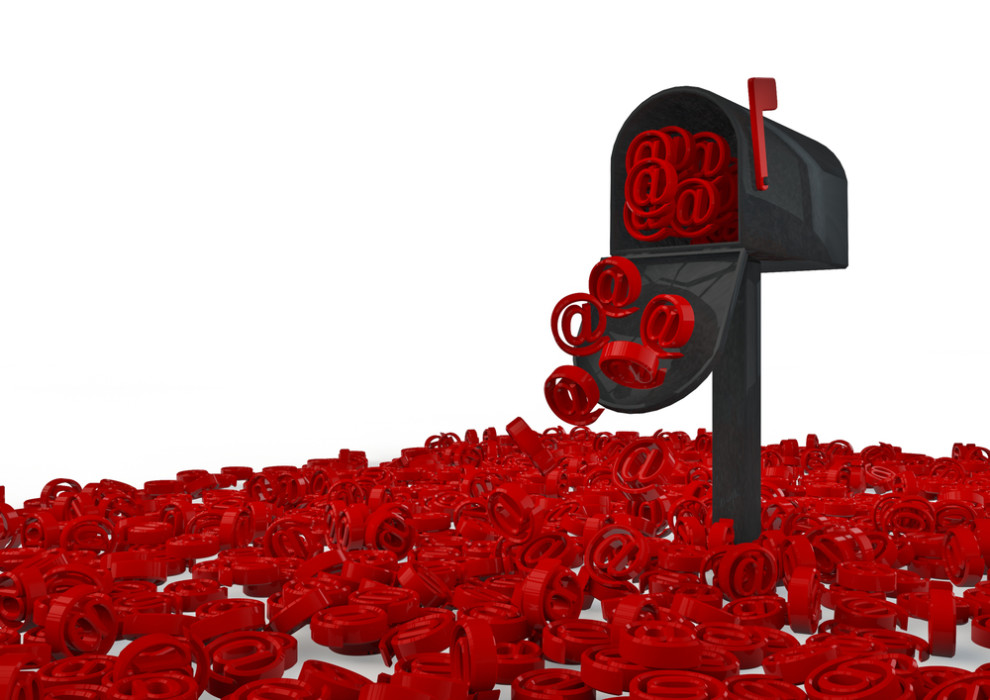January 2019 has seen a dramatic uptick in detections of malicious JavaScript email attachments, an attack vector that mostly lay dormant throughout 2018. Among the “New Year edition” of malicious spam campaigns relying on this vector, we have detected a new wave of Russian-language spam that distributes ransomware known as Shade or Troldesh, and detected by ESET as Win32/Filecoder.Shade.
The campaign appears to be a follow-up to a malicious spam campaign that started distributing the Shade ransomware in October 2018.
The January 2019 campaign
Our telemetry shows the October 2018 campaign running at a consistent pace until the second half of December 2018, taking a break around Christmas, and then resuming in mid-January 2019 doubled in size, as seen in Figure 1. The drops in the graph are aligned with weekends, which suggests that the attackers favor company email addresses.

Figure 1 - Detections of malicious JavaScript attachments spreading Win32/Filecoder.Shade since October 2018
As previously mentioned, this campaign is a part of a larger trend we have observed from the beginning of 2019 – the comeback of malicious JavaScript attachments as a widely used attack vector. Figure 2 shows this development as seen in our telemetry.

Figure 2 – Detections of malicious JavaScript distributed via email attachments, all of which are detected as JS/Danger.ScriptAttachment, in the last year
Of particular note, the campaign spreading the Shade ransomware in January 2019 has been most active in Russia, with 52% of the total detections of these malicious JavaScript attachments. Among other affected countries are Ukraine, France, Germany, and Japan, as seen in Figure 3.

Figure 3 - Distribution of ESET detections of malicious JavaScript attachments spreading Win32/Filecoder.Shade between January 1, 2019 and January 24, 2019
Based on our analysis, a typical attack in the January 2019 campaign starts with the delivery of an email written in Russian, with an attached ZIP archive named “info.zip” or “inf.zip”.
These malicious emails pose as order updates, seemingly coming from legitimate Russian organizations. The emails we have seen impersonate the Russian bank B&N Bank (note: recently merged with Otkritie Bank), and the retail chain Magnit. In one of the emails detected by ESET systems, the English translation is:
Subject: Details of the order
Hello!
I’m sending to you the details of the order. The document is enclosed.
Denis Kudrashev, manager

Figure 4 - Example of a spam email used in the January 2019 campaign
The ZIP archive contains a JavaScript file named “Информация.js“ (which translates to “Information” in English). Once extracted and launched, the JavaScript file downloads a malicious loader, detected by ESET products as Win32/Injector. The malicious loader decrypts and launches the final payload – the Shade ransomware.
The malicious loader is downloaded from URLs at compromised, legitimate WordPress sites, where it is disguised as an image file. To compromise the WordPress pages, attackers used mass-scale password brute-force attacks carried out via automated bots. Our telemetry data shows hundreds of such URLs, all ending with the string “ssj.jpg”, hosting the malicious loader file.
The loader is signed using an invalid digital signature that claims to be issued by Comodo, as seen in Figure 5. The name in “Signer information” and the timestamp are unique for each sample.

Figure 5 – Fake digital signature used by the malicious loader
Besides this, the loader attempts to disguise itself further by posing as the legitimate system process Client Server Runtime Process (csrss.exe). It copies itself into C:\ProgramData\Windows\csrss.exe, where “Windows” is a hidden folder created by the malware, and is not normally located in ProgramData.

Figure 6 – The malware posing as a system process and using version details copied from a legitimate Windows Server 2012 R2 binary
The Shade ransomware
The final payload of this malicious campaign is crypto-ransomware dubbed Shade or Troldesh. First seen in the wild in late 2014, but frequently resurfacing since, the ransomware encrypts a wide range of file types on local drives. In the recent campaign, the ransomware appends the extension .crypted000007 to the encrypted files.
The payment instructions are presented to victims in a TXT file, in Russian and English, which is dropped to all drives on the affected computer. The wording of the ransom note is identical to that from the previously-reported October 2018 campaign.

Figure 7 – The Shade ransomware ransom note from January 2019
How to stay safe
To avoid falling victim to malicious spam, always verify the authenticity of emails before opening any attachments or clicking on links. If necessary, check with the organization seemingly sending the email using contact details provided on their official website.
For Gmail users, it may be useful to know that Gmail has been blocking JavaScript attachments in both received and sent emails for almost two years now.
Users of other email services, including company mail servers, must rely on their awareness – unless they use some security solution capable of detecting and blocking malicious JavaScript files.
Several different modules in ESET security products independently detect and block malicious JavaScript files.
To avoid having your WordPress website compromised, use a strong password and two-factor authentication and make sure to regularly update WordPress itself, as well as WordPress plugins and themes.
Indicators of Compromise (IoCs)
Example hashes of the malicious ZIP attachments
| 0A76B1761EFB5AE9B70AF7850EFB77C740C26F82 |
|---|
| D072C6C25FEDB2DDF5582FA705255834D9BC9955 |
| 80FDB89B5293C4426AD4D6C32CDC7E5AE32E969A |
| 5DD83A36DDA8C12AE77F8F65A1BEA804A1DF8E8B |
| 6EA6A1F6CA1B0573C139239C41B8820AED24F6AC |
| 43FD3999FB78C1C3ED9DE4BD41BCF206B74D2C76 |
| ESET detection name: JS/Danger.ScriptAttachment |
Example hashes of JavaScript downloaders
| 37A70B19934A71DC3E44201A451C89E8FF485009 |
|---|
| 08C8649E0B7ED2F393A3A9E3ECED89581E0F9C9E |
| E6A7DAF3B1348AB376A6840FF12F36A137D74202 |
| 1F1D2EEC68BBEC77AFAE4631419E900C30E09C2F |
| CC4BD14B5C6085CFF623A6244E0CAEE2F0EBAF8C |
| ESET detection name: Win32/Injector |
Example hashes of the Shade ransomware
| FEB458152108F81B3525B9AED2F6EB0F22AF0866 |
|---|
| 7AB40CD49B54427C607327FFF7AD879F926F685F |
| 441CFA1600E771AA8A78482963EBF278C297F81A |
| 9023B108989B61223C9DC23A8FB1EF7CD82EA66B |
| D8418DF846E93DA657312ACD64A671887E8D0FA7 |
| ESET detection name: Win32/Filecoder.Shade |
Campaign-specific string in URLs hosting the Shade ransomware
| hxxp://[redacted]/ssj.jpg |
|---|





